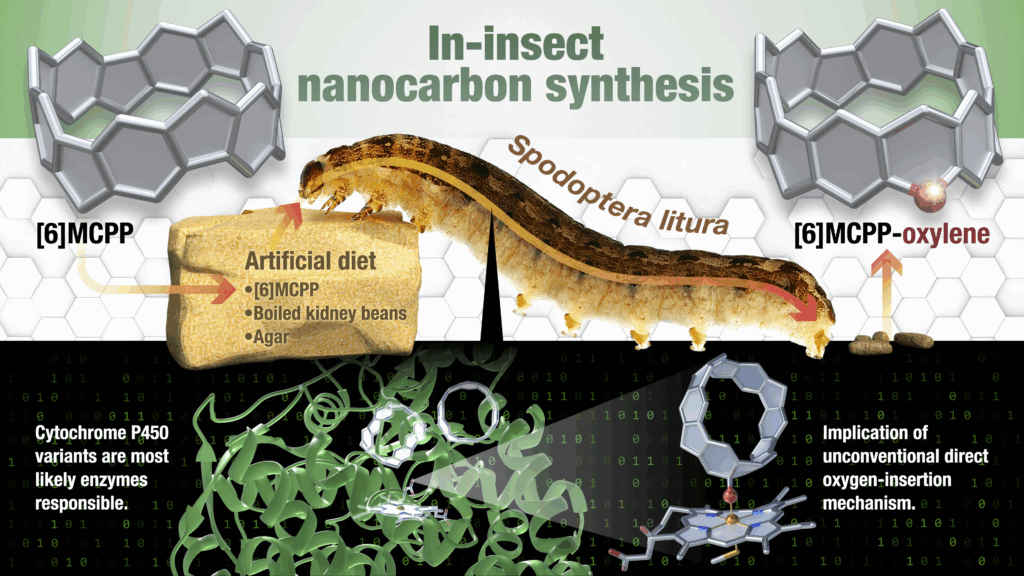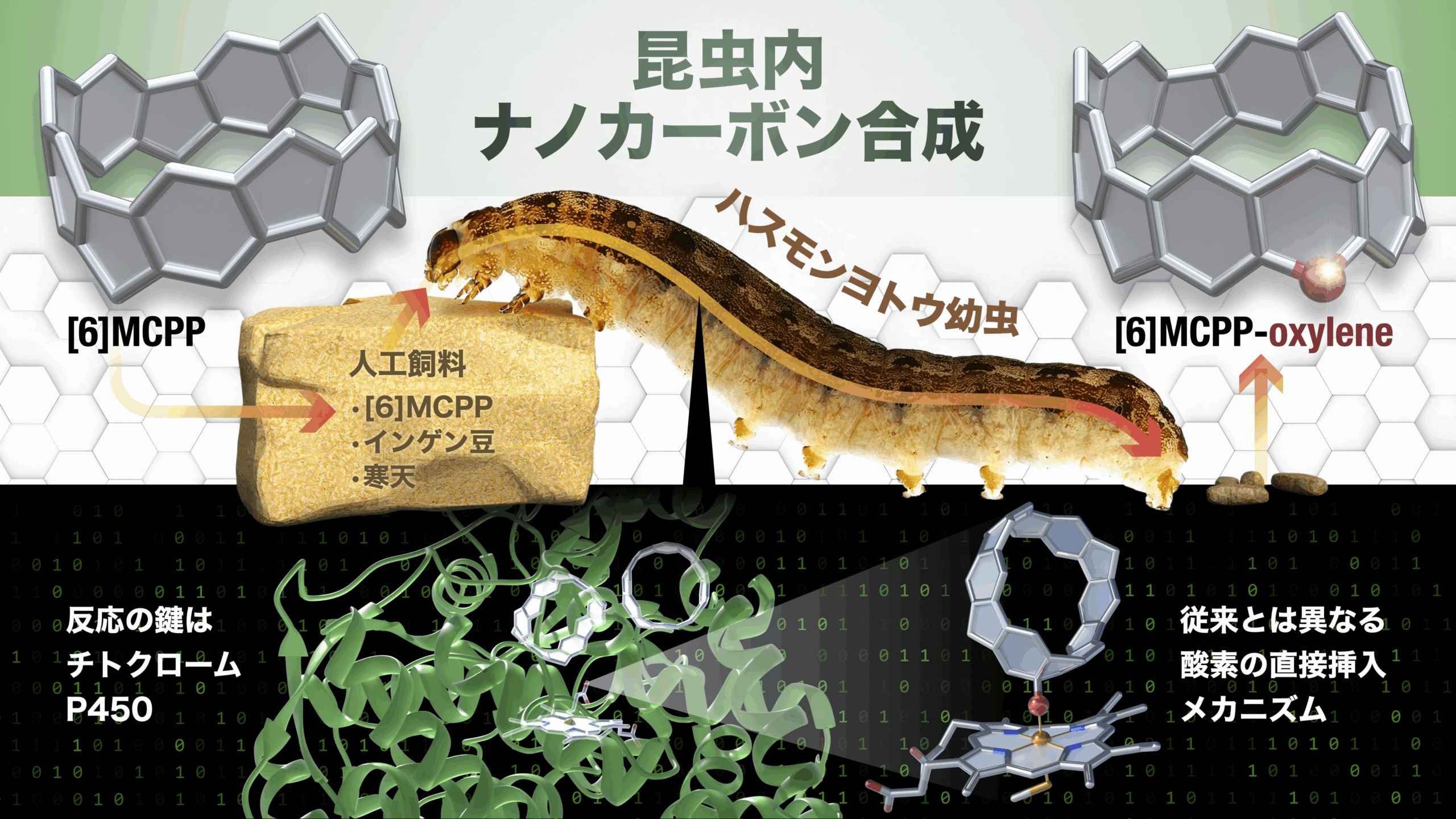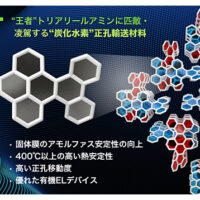![]() Our lab’s research on the in-insect synthesis of molecular nanocarbons has been published in Science!
Our lab’s research on the in-insect synthesis of molecular nanocarbons has been published in Science!
In-insect synthesis of oxygen-doped molecular nanocarbons
Atsushi Usami, Hideya Kono, Vic Austen, Quan Manh Phung, Hiroki Shudo, Tomoki Kato, Hayato Yamada, Akiko Yagi, Kazuma Amaike, Kazuhiro J. Fujimoto, Takeshi Yanai, Kenichiro Itami
Science 2025, 388, 1055–1061.
DOI: 10.1126/science.adp9384
It has been common practice to synthesize natural products and functional molecules using traditional organic chemistry in flasks or in vitro methods involving enzymes. In an effort to pioneer new methodologies for the creation of novel compounds in synthetic chemistry, we embarked on a rather unconventional challenge: “Feed molecules to insects densely packed with diverse enzymes and let them produce new functional compounds.”
As a result, we discovered that feeding belt-shaped molecular nanocarbons such as methylene-bridged [6]cycloparaphenylene ([6]MCPP) and [6]cycloparaphenylene ([6]CPP) to larvae of the common agricultural pest Spodoptera litura (Tobacco cutworm) results in the creation of new molecular nanocarbons. These molecules feature an oxygen atom inserted into the stable carbon-carbon bonds of MCPP and CPP. This represents the first example in which an insect can convert and synthesize non-natural functional materials.
Through molecular biology and biochemical experiments, we identified that this oxygen insertion reaction is catalyzed by enzymes known as CYP X2 and CYP X3 found in S. litura. We also revealed the detailed reaction mechanisms using molecular dynamics simulations and quantum chemical calculations.
Although S. litura has long been reviled as a notorious agricultural pest worldwide, it has become a hero to us.
![]()
![]()

Image created by Dr. Issey Takahashi (Nagoya University, ITbM)
This discovery presents a groundbreaking methodology in materials science, where chemical and physical synthesis and conversion have long been considered the norm. By using biological systems for functional molecule production, this study not only significantly contributes to new material creation but also opens up the potential for broader applications using genome editing and directed evolution techniques.
Nagoya University Press Release
Highlighted in
- Life Technology
- Yahoo! News
- PC Watch
- ScienMag
- EurekAlert!
- Bioengineer.org
- Interesting Engineering
- Mirage
- SCIENCE NOTIZIE
- The Chemical Daily
- Nikkei Shimbun
- Tii生命科学
- Phys.org
- 新浪科技
- Sciencenet(CHN)
- C&EN News
- ChemEurope
- Bionity
- Chemistry World
- N+1
- Nature Research Highlights
- 薬事日報(Yakuji Nippo)
- The Analytical Scientist
- Medium
- nano werk
- X-MOL
- 日刊工業新聞(THE NIKKAN KOGYO SHIMBUN)
- Frankfurter Allgemeine Sonntagszeitung
- FLASH
- Science Japan by JST


 日本語
日本語





















